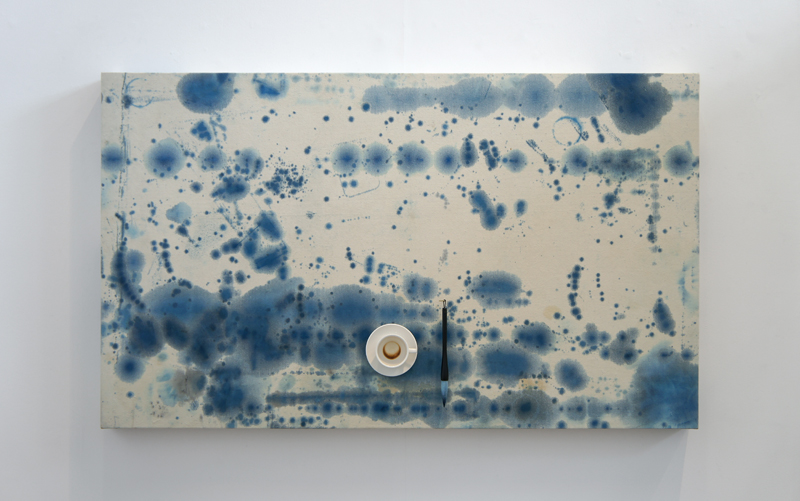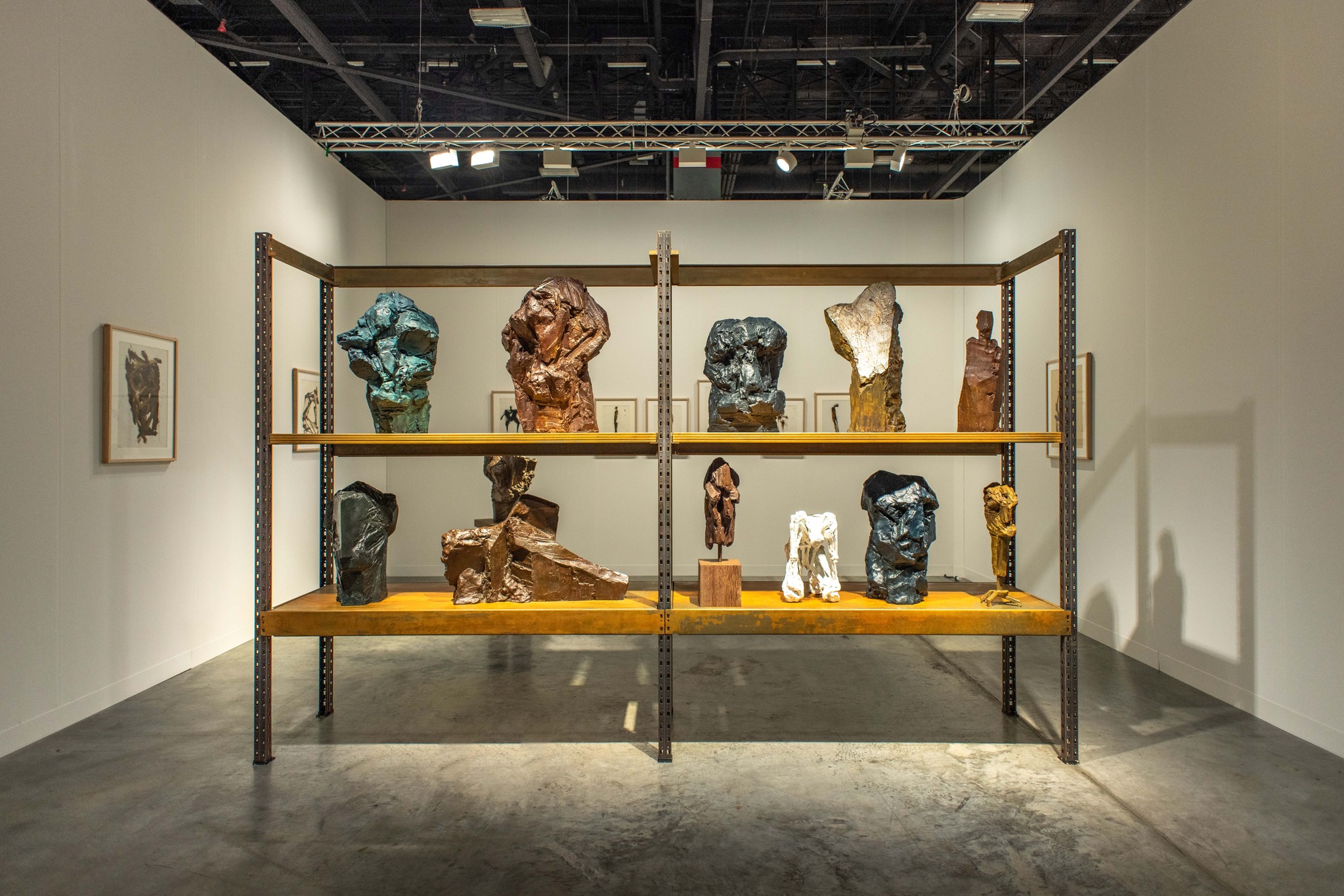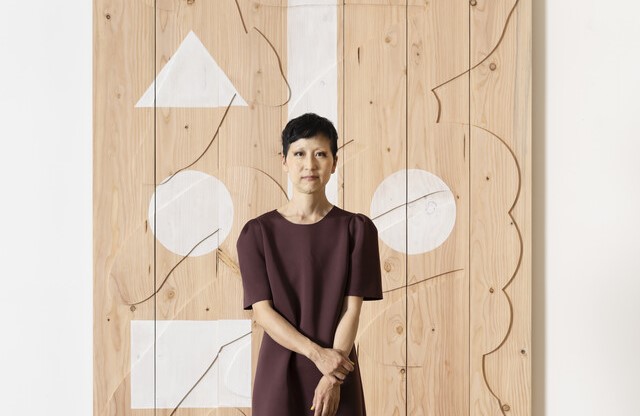Since the early 1990s, Inhyeon Lee (b.
1958) has been exploring the art historical structures that shape our
perception of painting. Lee has been questioning the facets as a front in modernist painting, and
presenting a multi-layered exploration of painting for the past 30 years in his
series L'épistémè
of Painting.
The ‘L'épistémè of Painting’ that unify his oeuvre originated from Michel Foucault's
philosophical concept of 'L'épistémè'. Michel Foucault said that every
discourse has a structure of perception that underlies it and that it has
periods of time like strata, which he called 'L'épistémè'. With a series of
paintings that emphasize the side, Lee reveals the art historical history
accumulated in the frontality of traditional painting and creates a new stratum
in the structure of our perception of painting.
Inhyeon
Lee's paintings extend beyond the front of the canvas to the sides, top, and
bottom, as well as the corners. To emphasize the sides, the artist chose a
three-dimensional canvas with a sense of thickness rather than a conventional
canvas. Furthermore, at the moment of painting, the front is displayed as a
side and the side as a front.
In some
cases, the two canvases are glued face-to-face so that the front is hidden by
the joint and only the side is presented, and in other cases, the canvas fabric
is completely unfolded and fixed in a way that makes both the front and the
side become the front. In Lee's paintings, the distinction between front and
side eventually becomes meaningless.
Another
characteristic of Lee's paintings is his technique of letting the paint soak
into the canvas. Instead of making a "stroke of the master" on the
canvas, he deliberately excludes the artist's hand. Instead of touching the
brush directly to the canvas, he holds it still to allow the paint to drip,
placing the diluted oil paint on the cloth.
All of
these actions, which emphasize the materiality of the work and deconstruct the
notion of completeness guided by the artist's hand, expand the realm of visual
appreciation, forcing us to think about the structure of our perception of
painting. As such, each work is not a single, finished piece, but an ongoing
work on the ‘L'épistémè
of Painting’ that runs through his life, every act of thinking about art.

Inhyeon Lee, L'épistémè of Painting, 1996 ©Arko Arts Archive
This
subversion of traditional painting, which emphasizes the frontal canvas frame
and the artist's hand, has been the foundation of Lee's work, showing various
variations.
He creates symmetry by applying traces of paint
that ooze equally from the top and bottom, or by placing thin smears of paint
like mist or fog at the joints of other connected canvases on a wide, blue
surface like the ocean, or by making small and large dots (holes) appear and
disappear on thinly sliced cheese-like canvases, a few dots on a dice-shaped
cube with rounded corners in a gestural painterly arrangement, and so on, all
of which have a sculptural quality to them, and induce the viewer to look at them
from the side.

Inhyeon Lee, L'épistémè of Painting, 2006 ©Rho Gallery
Meanwhile, Inhyeon Lee's 2006 painting
L'épistémè of Painting was created in a different way. The artist first wrapped
a canvas cloth around a long wooden stick and soaked it in dark blue paint,
then used the stick as a brush to sweep the paint across a large expanse of raw
canvas without stopping to avoid smearing it. The wooden stick glides across
the canvas at a steady pace, neither close to nor completely off the canvas.
Like the previous method, which
excludes the artist's intervention, this technique relies on the role of the
canvas and the long rod. The painting created by friction leaves little room
for the artist's intention or control. The subtle irregularities and variations
of the canvas are left as traces with the trembling of the hand. The resulting
canvas screens are then partially selected for frames of canvases of different
sizes, and the canvases are reassembled into works.

Inhyeon Lee, L'épistémè of Painting - Refurbished, 2012 ©Gaain Gallery
Lee's L'épistémè of Painting series, subtitled 'Refurbished', is another
example of Lee's experimentation with the medium of painting. By using cloth as
a base, testing the consistency of paint, reconstructing previously made works
into new ones, or adding 'objects' such as work tables, brushes, coffee cups,
or children's shoes to the 'works', Lee demonstrated that every work can be 'refurbished' as another work,
and every object as a new role for other objects.
Furthermore,
the artist has made various attempts such as using the exhibition space itself
as a frame for the paintings, reminding us of the problems posed by frames;
stacking works that are more than 10 years apart in age to show the context of
the images; and introducing the concept of 'featuring', superimposing Jung
Kwang Ho's works and his own works on top of each other to show the physical
cohabitation of sculptures that lack mass and paintings that have thickness.
 Inhyeon Lee, L'épistémè of Painting - Lagrangian point, 2017-2022 ©Gallery SoSo
Inhyeon Lee, L'épistémè of Painting - Lagrangian point, 2017-2022 ©Gallery SoSoThe
latest work in the series, L'épistémè
of Painting - Lagrangian point,
is made up of "works including frames," which introduce colorful
variations on the spatial divisions that define the interior and exterior of
the work. The frames that enter the work's territory do not limit the space of
the work but rather blur its boundaries. The wire extending from the wall
brings the wall beyond the canvas into the work.
The
subtitle, ‘Lagrangian
point,’ is a special solution to the unsolvable
three-body problem, referring to the point in an orbit where gravitational
equilibrium is achieved between two celestial bodies. The Lagrangian
point is named for the point where the mathematician Joseph-Louis
Lagrange found an exception to the unsolvable three-body problem where gravity
becomes zero, unlike the gravitational action between two points that is
clearly defined by Newton's universal gravitation.
Lee's
paintings, which exist as an exception among traditional paintings, are located
at the 'Lagrangian point' and invite the viewer to squint against the framework
of painting that demands frontality and completeness, to view the work with the
time it has been constructed in mind, and to reconsider the concept of
completeness. Lee's work breaks down the idea of the main and the peripheral,
the unfinished and the finished, the past and the present.
"Rather than arbitrarily drawing a certain image, I have a production process that allows it to come out naturally and physically. There are works on the side, so you can't help but walk around and look at them. Rather than appreciating the image created by the artist, you can appreciate it by following the way the work is done." (ABN, Interview with Inhyeon Lee, 2024.04.04)

Artist Inhyeon Lee ©CNB Journal
Inhyeon Lee holds a B.F.A in Art from
College of Fine Art in Seoul National University, and a M.F.A and a D.F.A from
College of Fine Art in Tokyo National University. Lee currently serves as
professor of painting in the Painting Department in Hansung University.
He has held lots of solo exhibitions
in Korea and Japan and taken part in many group exhibitions in art institutions
and museums at home and abroad including the National Museum of Modern Art in
Seoul, Grand Palais in Paris, Seibu Museum of Art in Tokyo, the National Art Gallery
in Kuala Lumpur, Artcore Gallery in Los Angeles, and the Institute of
Contemporary Arts Singapore. His works are housed at the National Museum of
Modern Art in Seoul, the British Museum and Seoul Museum of Art, etc.


















